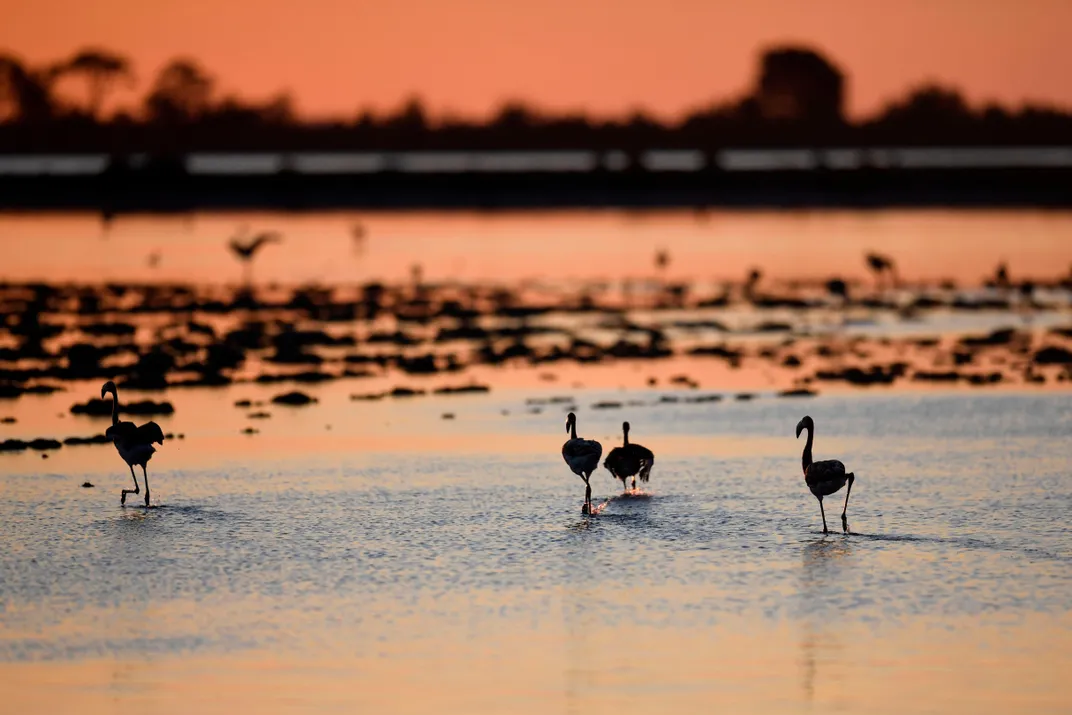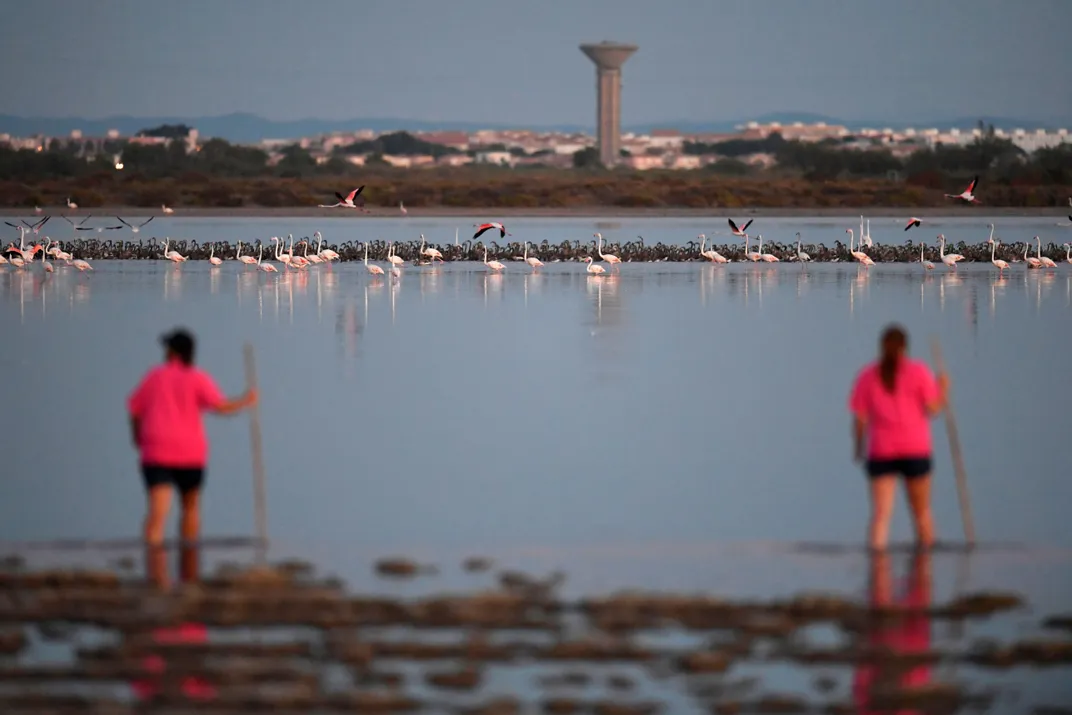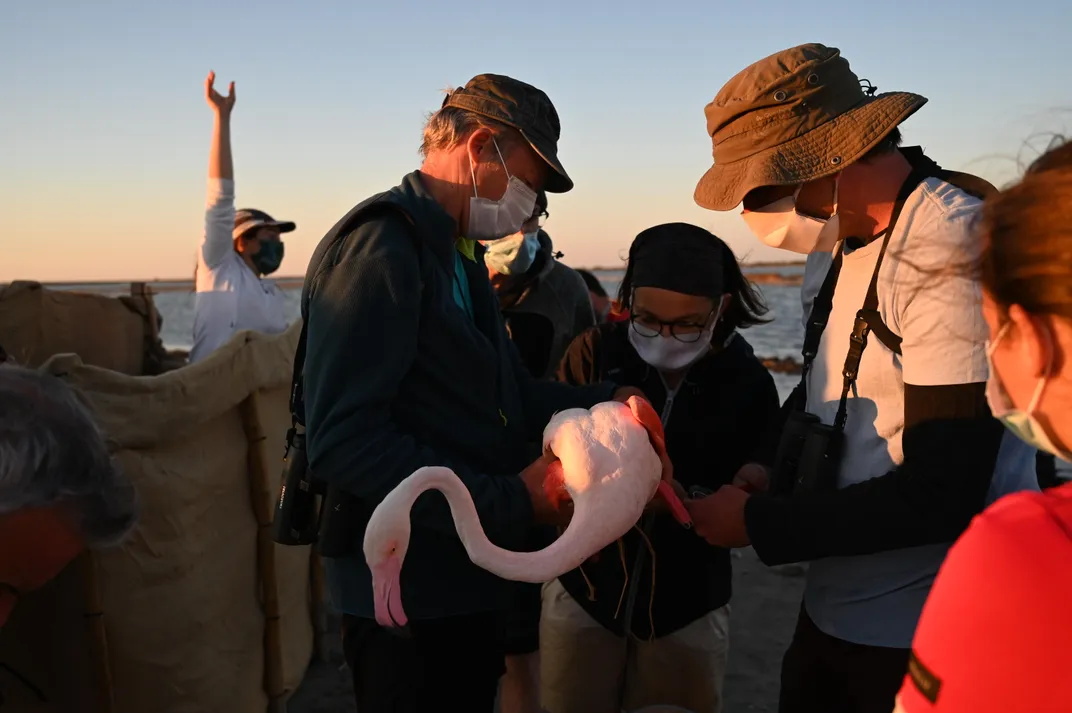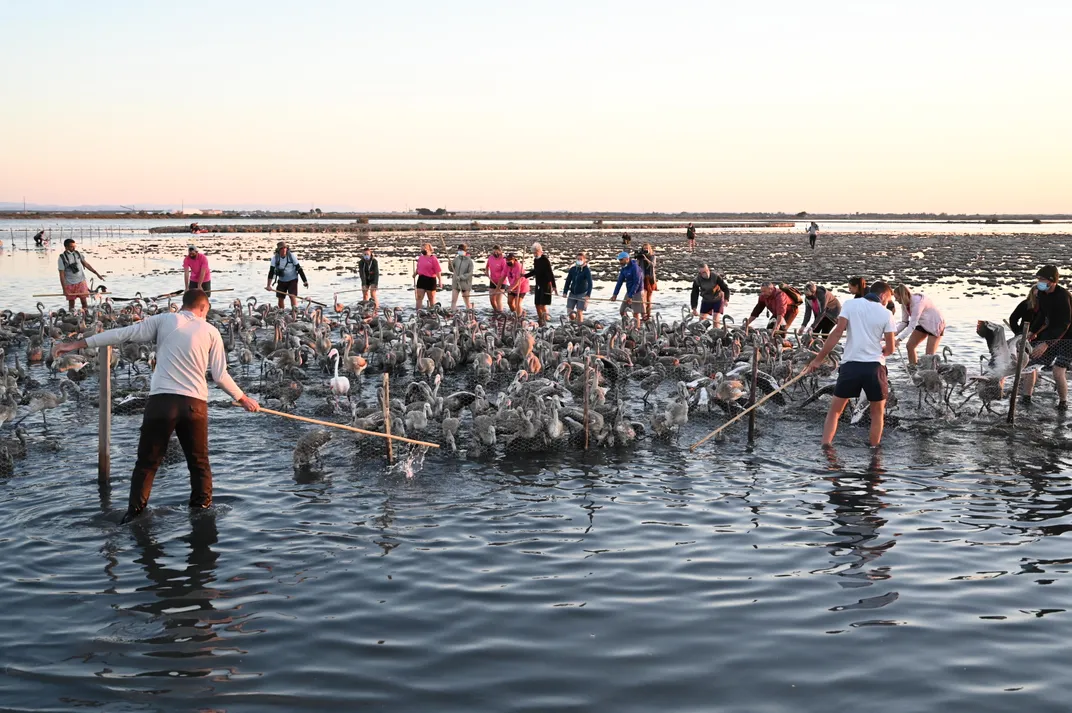Record-Breaking 60,000 Flamingos Flock to Southern France
More than 50,000 adults and 12,000 babies were counted in aerial photos, suggesting a record-breaking year for the pink birds
/https://tf-cmsv2-smithsonianmag-media.s3.amazonaws.com/filer/5e/71/5e71e727-05a6-4920-be73-5cc70c9f437e/gettyimages-1227919714_1.jpg)
Last week, an estimated 50,000 adults and 12,000 baby flamingos flocked to salty marshes in southern France, making this year’s migration possibly the biggest ever recorded, reports Elaine Ganley for the Associated Press.
Thierry Marmol, the guardian of the marsh region, tells AP that experts counted the birds using aerial footage. This “historic” headcount—which includes 25,000 nesting couples—might be the highest ever since the region started keeping track 45 years ago, Marmol says.
As Ganley notes, the birds make the yearly trek to the salty marshes in the Camargue region, near the Aigues-Mortes commune. According to Atlas Obscura, these marshes are sometimes a bright shade of pink, thanks to their ecosystem of algaes. The marshes have been used as a supply of salt since the Roman empire occupied France centuries ago.
The AP reports that these birds will eventually migrate further south to Spain, Italy, Turkey or North Africa in search of warmer climates. According to the San Diego Zoo, flamingos are remarkably social animals that can live in groups—known as “flamboyances”—containing up to tens of thousands of birds.
Frédéric Lamouroux, the director of the nearby Pont de Gau Ornithological Park, told the Marseille newspaper La Provence in April that his site had witnessed nearly double the amount of flamingos as normal. During lockdown, rangers had also noted other species of birds that rarely appear at the popular tourist destination, such as Plegadis falcinellus, otherwise known as the Glossy ibis.
Male and female flamingo pairs typically breed and nest in pairs, Lamouroux tells La Provence’s Olivier Lemierre. Females only produce one egg per year, so it’s imperative that the couple protect their eggs from danger. The migratory birds use these salt marshes as a safe place to flock together, nest and give birth. According to the BBC, flamingos are born gray but turn pink as they grow up and begin to feed on a diet of invertebrates and algae, which give the bird’s feathers their characteristic hue.
Last week, volunteers tagged about 320 baby birds with bands that fit around their legs. These markers help scientists in other countries identify the birds and track their migration, reports the AP.
Although more research is needed to confirm the theory, some experts suspect that the lockdown during the COVID-19 pandemic might be related to this year’s record numbers of flamingo nests. Lamouroux suggests to La Provence that the lack of tourists—which typically descend on the marshes in the thousands from April to June—might have encouraged more of the birds to set up shop in the marshes.
“Maybe the confinement helped to make a good year,” Marmol tells the AP. “It’s obvious that with confinement there were no disturbances. There were no airplanes, no noise at all.
/https://tf-cmsv2-smithsonianmag-media.s3.amazonaws.com/accounts/headshot/nora.png)




/https://tf-cmsv2-smithsonianmag-media.s3.amazonaws.com/accounts/headshot/nora.png)